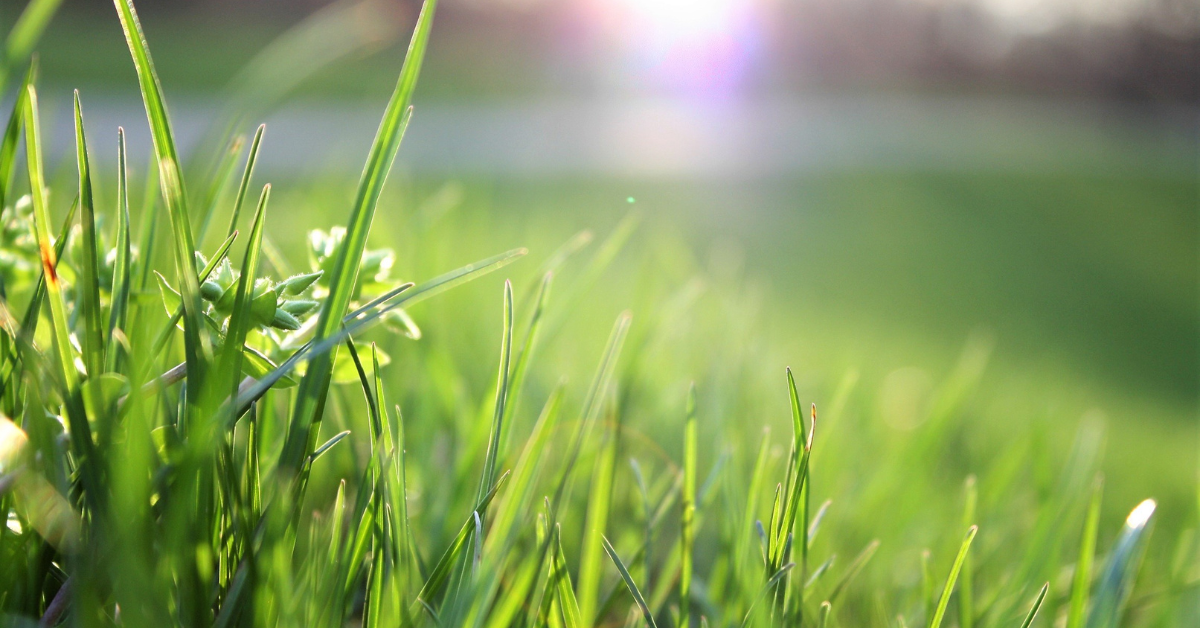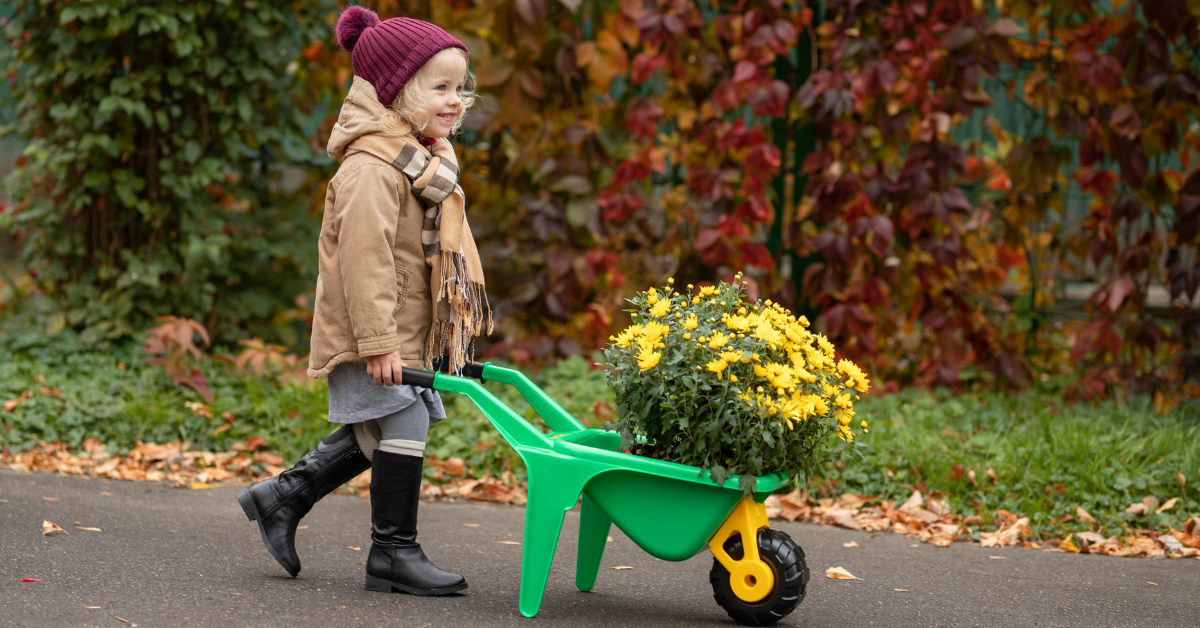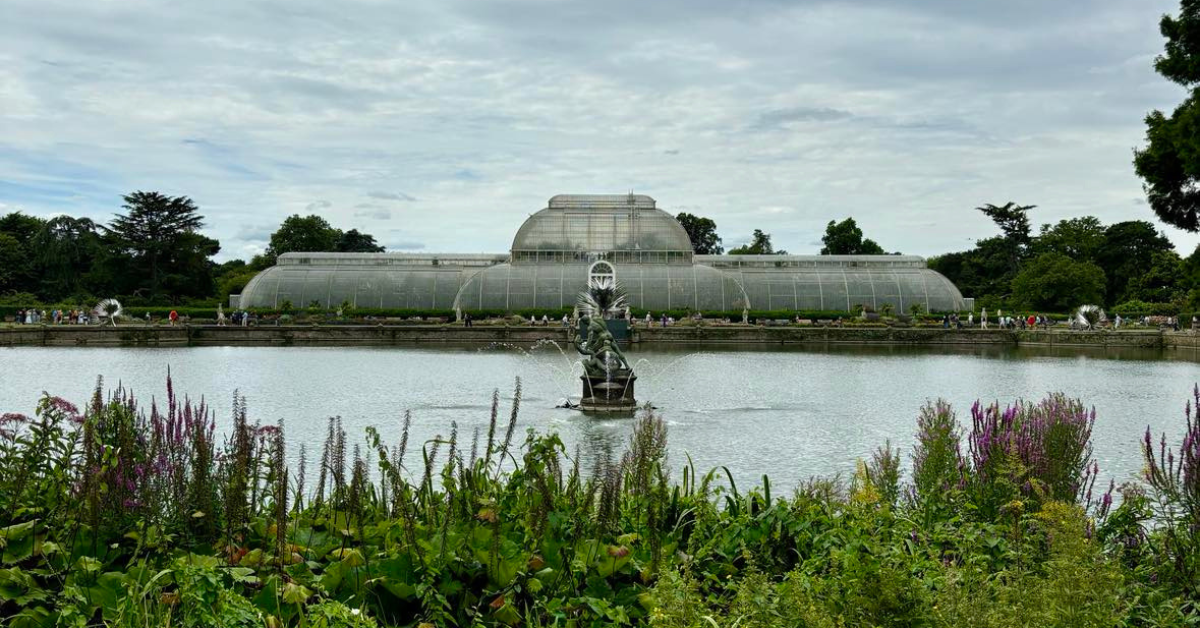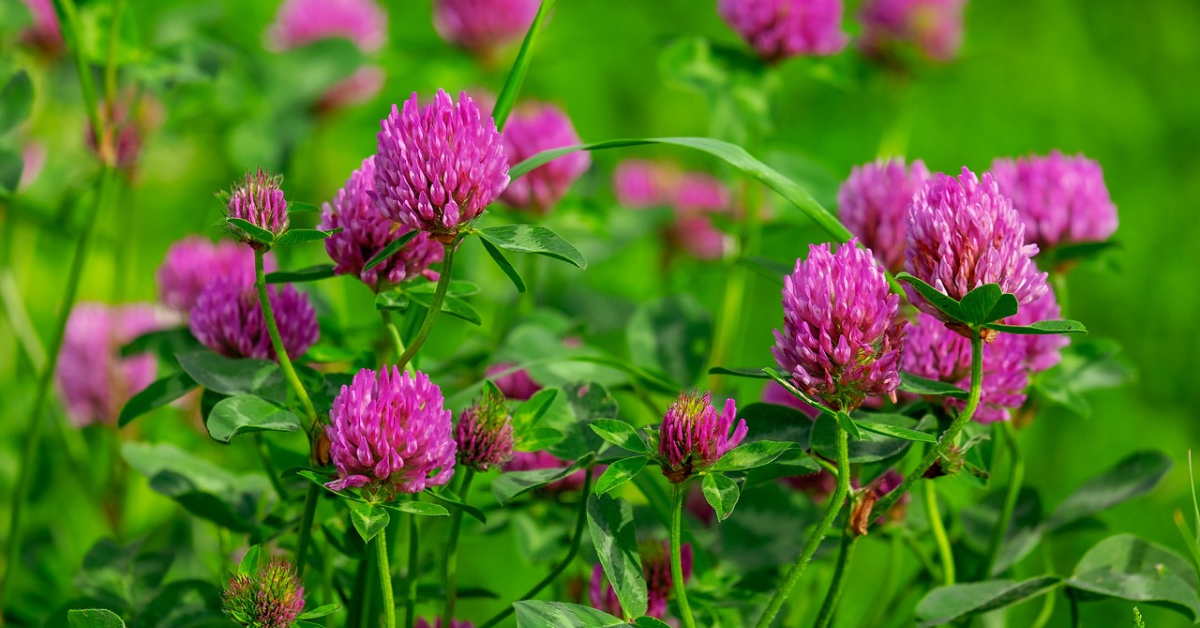
Creating a Healthy Sustainable Lawn : The Best Eco-Conscious Grass Seed and Feed

*Collaborative Post
When we think about making our homes more sustainable, the garden is often the perfect place to start. A healthy, thriving lawn doesn’t need to be a chemical-filled one. By making a few simple, eco-conscious swaps, we can create a beautiful green space that benefits both our family and local wildlife. Matt Adams, founder of The Relentless Gardener shares his tips on achieving a healthy, sustainable, 100% organic fed lawn.
Choosing Your Grass Seed Alternatives
There’s a lot to be said for using native grass seed species, such as fescues and bent. When looked after properly, they can create lush, green lawns that stand out in any garden. They can create a beautiful contrast with the flower beds. However, other seed mixes can create a truly sustainable lawn. one that works with nature, not against it.
Clover Mixes With Grass Seed
I usually recommend looking for a mix that contains micro-clover, which is a small-leaf variety that blends in beautifully with grass. Clover is a “nitrogen-fixing” plant, which means it pulls nitrogen from the air and puts it back into the soil, naturally fertilising your lawn. This reduces the need for external feeds and keeps your lawn green even in dry spells.
Wildflower Mixes With Grass Seed
For a completely different look, you could consider converting a section of your grass into a wildflower meadow using seeds. There are 2 types of blossoming wildflowers, one is the annuals that need to be sowed each year and others are the perennials. In my experience, the annuals give a great burst of colour and are fantastic for converting a bare patch of soil into a beautiful landscape quickly and cheaply.
This is also a fantastic way to support bees and other pollinators. If you have an established lawn, you can plant wildflower plugs or try to overseed with a mix that includes yellow rattle, which is a plant that helps to weaken the grass, giving the wildflowers a better chance to flourish.
Feeding Your Lawn Naturally
Most plants need food and nutrition in the soil to grow, but that doesn’t mean you have to reach for a synthetic fertiliser. Here are some excellent eco-conscious alternatives:
Use Organic Granular Feeds
If you’re looking for a store-bought option, The Relentless Gardener offers 100% organic alternative to every seasonal lawn feed. These are often made from natural ingredients like seaweed, composted plants, or even byproducts of the animal industry. Look for products that are “Soil Association certified organic” to ensure they are free from synthetic chemicals.
Make Grass-Clipping Tea
This is a simple, no-cost way to feed your lawn. Grass clippings are rich in nitrogen. You can create a liquid feed by soaking fresh grass clippings in water for a day or two. Strain the liquid and use it to water your lawn for an instant nutrient boost.
Remember though, don’t leave it too long before leaving them on the grass otherwise the clippings may suffocate whatever living greenery is already there.
Apply Compost
You can use compost as a top dressing on your lawn in the Autumn and Spring. It improves soil structure and slowly releases a wide range of nutrients. When overseeding a lawn, adding a thin layer of compost is a game-changer. This isn’t just about feeding the grass; it’s about creating a perfect nursery for new seedlings. Compost improves the soil’s structure, allowing it to hold onto the right amount of moisture. This is crucial for new seeds, which need a consistently damp environment to germinate successfully.
By providing this moisture-rich, stable bed, compost ensures that more of your seeds will sprout, giving you a thicker, more successful lawn. Beyond its role as a nursery, compost acts as a long-term food source. Unlike synthetic fertilizers that deliver a sudden burst of chemicals, compost releases a steady stream of nutrients over time.
This slow-release feeding prevents the new seedlings from being overwhelmed, a common issue with chemical feeds, and ensures they have a consistent supply of everything they need as they establish their roots. This continuous nourishment leads to stronger, healthier grass from the very beginning, setting your lawn up for long-term success.
Adopting Sustainable Lawn Care Practices
A truly sustainable lawn isn’t just about what you put on it—it’s also about how you care for it.
Mow Less
A simple way to help the environment is to cut the grass less often, or at least raise the height of your mower blade. Leaving your grass a little longer encourages deeper root growth, making it more resilient to drought and providing shelter for small creatures and insects. Consider participating in “No Mow May” or leaving a section of your lawn to grow wild all summer.
Water Wisely
Lawns and seed mixes are surprisingly resilient. They will often go brown in a dry spell, but will quickly recover once the rain returns. If you do need to water, do it in the early morning or late evening to reduce evaporation and use collected rainwater where possible.
Avoid Harsh Herbicides and Pesticides
These are not good for the soil, and especially not good for the living animals in your garden. What’s more, it’s common for homeowners to apply lawn care products without realising that they contain weed killers – even when they don’t have weeds. So, always read the label of the products you’re applying. Even better, always buy 100% organic products that don’t contain any ‘killers’. A healthy lawn can naturally outcompete weeds and moss, especially if you’re using a clover mix. If a weed is a major issue, try to remove it by hand, making sure to get the full root out. Then apply a 100% organic lawn feed.
To Summarise
Matt outlines a simple and effective approach to creating a healthy, sustainable lawn without relying on chemicals. It begins by explaining that a truly eco-conscious garden starts with choosing the right seeds.
By opting for clover mixes, which naturally fix nitrogen in the soil, or a wildflower lawn, you can reduce the need for external fertilizers and create a habitat that supports local biodiversity and pollinators. The article then provides natural alternatives for feeding your lawn. Instead of synthetic chemicals, it suggests using compost as a top dressing to improve soil structure, or a simple “grass-clipping tea” as a nutrient-rich liquid feed. For those who prefer a store-bought solution, the guide recommends looking for certified organic granular feeds. Finally, the post emphasizes that sustainable lawn care is about more than just what you use; it is about how you maintain it. By mowing less frequently, you encourage deeper root growth, making the grass more resilient. The guide also encourages watering wisely—only when necessary and at the most efficient times—and completely avoiding chemical pesticides to ensure your lawn is a safe and thriving space for your family and the wildlife around you.
*This is a collaborative post. For further information please refer to my disclosure page.




